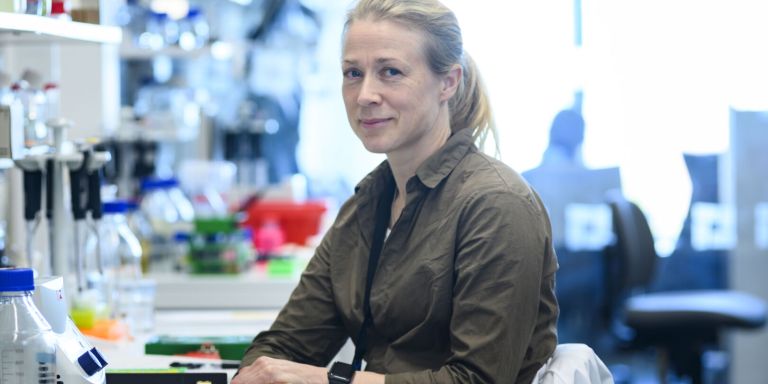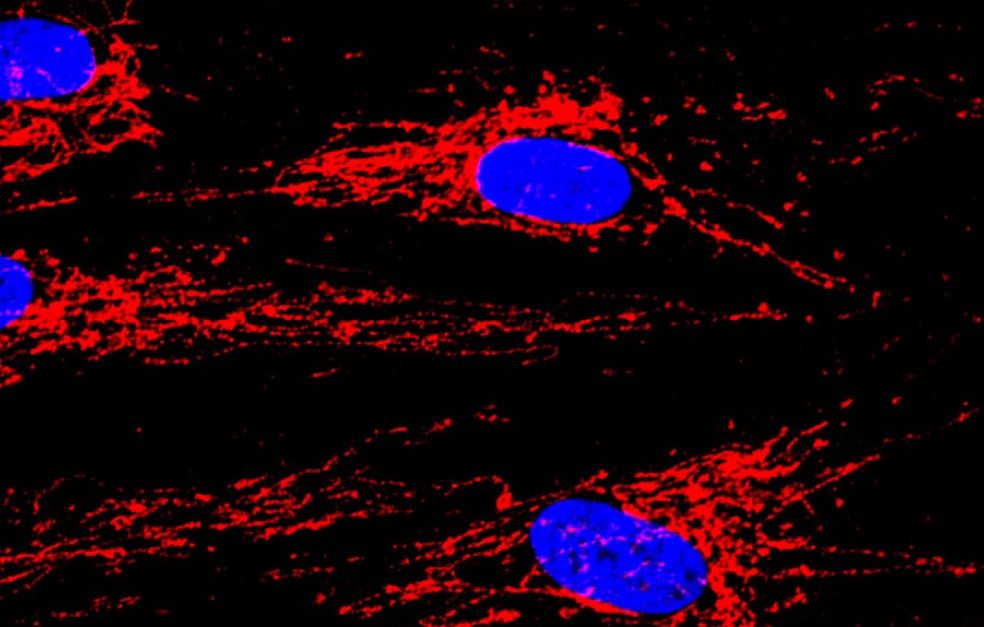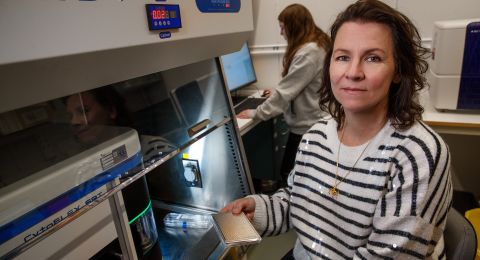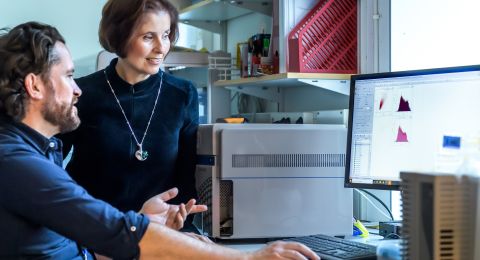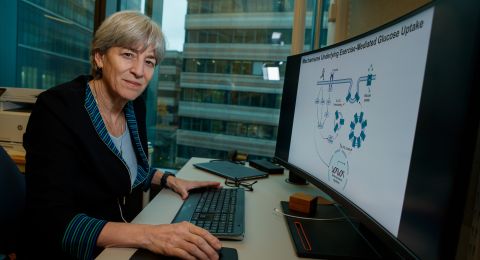
Project Grant 2019
Mitochondrial Methyltransferases – From discovery to disease
Principal investigator:
Dr. Anna Wredenberg
Co-investigators:
Karolinska Institutet
Nils-Göran Larsson
Joanna Rorbach
Anna Wedell
Institution:
Karolinska Institutet
Grant in SEK:
SEK 36 million over five years
Mitochondria are present in large numbers in our cells – in hundreds, thousands, and sometimes tens of thousands. They are thought to have originated from bacteria built into primitive cells over a billion years ago, enabling them to use oxygen.
Vital processes take place in the mitochondria, converting carbohydrates, fat and proteins from food into energy to supply our bodily organs. This is why mitochondria are frequently called the powerhouses of the cells.
Anna Wredenberg is a researcher at Karolinska Institutet, and works as medical doctor at the Center for Inherited Metabolic Diseases (CMMS) at Karolinska University Hospital. She is interested in what happens when mitochondria do not work as they should.
“Impaired mitochondrial function can lead to a number of diseases. Life cannot go on if they stop working altogether.”
Impairment of mitochondrial function particularly affects tissues or organs that require large amounts of energy, such as the brain, muscles and heart. Symptoms can vary enormously, which makes the diseases difficult to diagnose.
Mutations in DNA
Mitochondrial diseases can be caused by genetic changes in the DNA present in the cell nucleus or in mitochondrial DNA itself. These conditions are uncommon, but not as uncommon as first appears.
“About one person in 5,000 is at risk of developing some form of mitochondrial disease during their lifetime. There is currently no cure,” Wredenberg says.
Mitochondria also play a key role in common and widespread diseases, including diabetes, heart failure and neurodegenerative diseases. In addition, impaired mitochondrial function is associated with the normal ageing process as well as various forms of cancer.
To help patients in the future it is essential to learn more about how mitochondria work. In a project funded by Knut and Alice Wallenberg Foundation, Wredenberg’s research team is collaborating with other researchers at Karolinska Institutet in mapping the immediate surroundings of mitochondria in the cell.
The starting point for the project is the discovery of a previously unknown mitochondrial disease in 2015.
“We found the first three patients with a defect in a transport protein located in the mitochondrial membrane. Following the publication of our findings, there have been reports of more patients, children as well as adults, with the same disease.”
Symptoms vary from mild loss of muscle strength to potentially fatal deterioration of heart and lung function.
“The same mitochondrial defect can manifest itself in many ways, which is problematic. Detailed studies are needed to help us understand the mechanisms underlying mitochondrial diseases.”
Focus on protein studies
The project focuses on a process called methylation. This is a biochemical process that takes place continually inside the cell, by which a group of atoms – a methyl group – is transferred from a protein to another molecule, e.g. a protein or RNA, thereby regulating its function. Mitochondria need multiple methyl groups to work optimally.
“We want to find out exactly what happens when this ‘methyl group donor’ does not enter the mitochondrion, and how methyl groups are attached to different molecules. If we manage to understand how that process can be regulated, and whether it could be controlled, we may also come closer to an effective therapy for these diseases.”
An overarching approach
The project involves collaboration between different specialists. Fruit flies are being used as a model system, along with mice. The mitochondrial system is virtually identical in mammals and fruit flies.
The project also has access to patient material via CMMS, a biobank whose material includes tissue samples from patients with mitochondrial diseases.
“The material has been collected over the past 30 years and is unique of its kind,” says Wredenberg.
Cryogenic electron microscopy is used to analyze the structure and function of proteins. This advanced technique allows the scientists to image molecules and cell structures.
“The project is a good example of close collaboration between basic research and clinical practice – we need one another to drive the research forward.”
Wredenberg is cautiously optimistic. Mitochondria are no longer a complete mystery, but there is much to learn before it will be possible to produce therapeutics that can take control over and regulate mitochondrial function.
“That would be a dream scenario, but we’re presently engaged in basic research, and increasing our understanding of various disease mechanisms – an effective therapy is a long way off. But in the interim we are learning a great deal about the part played by mitochondria in various diseases. That knowledge may contribute to improved investigation and diagnosis.”
Text Nils Johan Tjärnlund
Translation Maxwell Arding
Photo Ulf Sirborn, Stefan Zimmerman, Najla El Fissi, David Alsina
